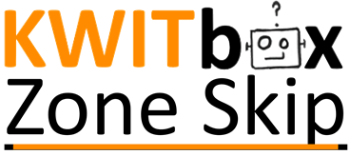
KWITbox Zone Skipping builds upon the foundation of ASN+ and Compliance to divert in transit inventory that bypasses entire segments, and costs, of your supply chain. Taking advantage of the time tested and proven strategy, Zone Skipping:
• KWITbox Receive makes inventory available earlier so you can Allocate its final destination using your ERP logic
• Using the Allocation file, each box is labeled with its final destination/parcel label
• Load planning to group and divert inventory based upon geographic area into a specific container
• Directed loading to insure the proper box gets in the right container
• Box/container level tracking of inventory through all steps of the process
ZONE SKIP Functions
Incl.
The following 9 functions serve as a roadmap for how Zone Skipping can be deployed to fit your company’s specific requirements. Rearranging or editing the functions to your supply chain ensures a ‘custom’ solution that all of the stakeholders of your supply chain can use and benefit.
Booking

This function creates the unique serial number for each carton which you simply print locally, or at your vendor, as a label. The purchase order number, line/sku number and quantity open are all validated and directly assigned to each specific box. When the SKU is lot controlled, lot number and expiration date are also captured so that you Know What’s In The Box for Compliance.



